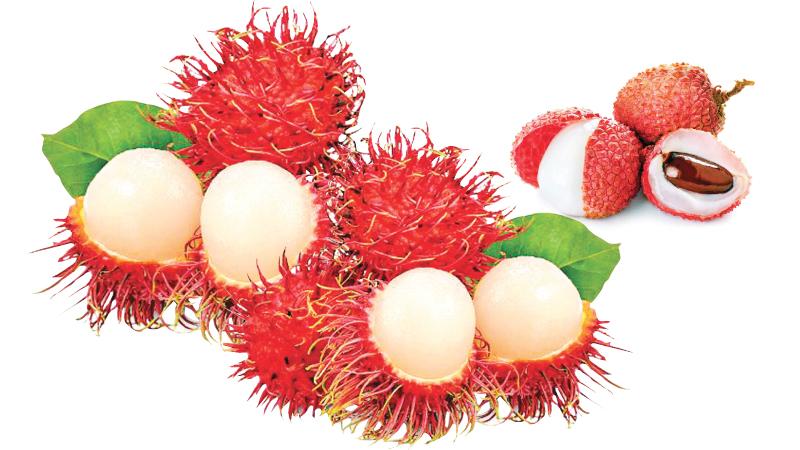
Rambuttan
The rambuttan is a very delicious fruit in many South East Asian countries where it grows abundantly. It is an evergreen tree which belongs to the soapberry family. Rambuttan is a seasonal fruit meaning there are particular times in the year when there are rambuttan fruits. Generally, each rambuttan tree bears 5,000–6,000 fruits when in season. It is related to the lychee family.
The rambuttan is said to have originated in Malaysia and Indonesia and the name rambuttan comes from the Malaysian and Indonesian words for ‘hairy’.
The outer covering of the rambuttan fruit is indeed hairy. It has soft, black spikes. The soft spikes on the skin are black. The rambuttan skin is green when unripe and turns bright red or orangish red when ripe.
The kernel of the rambuttan is white, fleshy and sweet, In the middle of the fruit is a brown seed which is inedible.
Rambuttan grows in Malaysia, Indonesia, Thailand, Vietnam and other South East Asian countries and also Sri Lanka. Malwana is famous for rambuttans.
A medium sized tree can grow to a height of 68 feet. Rambuttan leaves are dark green and are arranged alternately on the branches. Rambuttan grow on well drained, fertile sandy or loamy soil. There are over 200 varieties of rambuttan but only a few are fit for human consumption. Thailand is the biggest exporter of rambuttans in the world. Rambuttan is generally sold fresh but they are also canned in a sweet syrup and sold locally or exported. Rambuttan is also used to make jams, jellies and ice cream.
Rambuttan is rich in dietary fibres. Vitamins C and B3 and minerals such as iron, calcium and copper are found in moderate amounts in rambuttan.
Lychees
Like the rambuttan the lychee is also a tropical fruit and originated in southern China. It belongs to the soapberry family and is an evergreen tree. It grows in warm, tropical climates and can be found in tropical and sub-tropical countries.
The cultivation of lychees began in 1059 AD in Southern China, Malaysia and Vietnam. In ancient times, lychees were so popular with the Chinese Emperors that they kept a fast, horse courier service for the transportation of lychees. The lychee was first introduced to the West by a Polish, Jesuit priest named Michael Boym in 1656. Today, lychees are very much in demand in the West as well as the East.
The lychee tree grows in well-drained and slightly acidic soil. The height of the lychee tree can vary from 40 to 60 feet. In the Northern hemisphere lychees bloom from November to February and in the Southern hemisphere they bloom from April to August.
The flowers are fragrant and attracts bees who are also the main pollinators of the lychee.
The lychee leaves are shiny. The flesh of the lychee is soft, white, succulent and translucent.
The fruit has a brown stone containing toxin which makes it inedible.
The flesh of the lychee has a mixed taste of grapes and pears. The texture of the fruit is similar to that of grapes.
The lychee has 66 calories in a 100 grams of the fruit. It is a rich source of dietary fibres and also has Vitamin C, B1, B3 and B and minerals such as copper, potassium, calcium and magnesium. Lychees are sold fresh and canned in syrup.
They can also be frozen and used. Lyches are used in fruit salads, jellies, preserves and ice cream.

